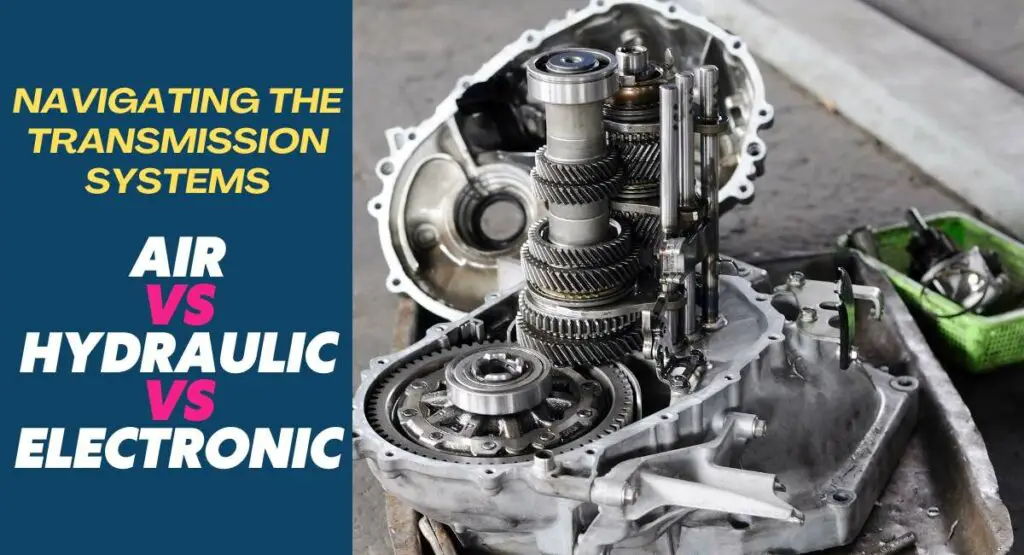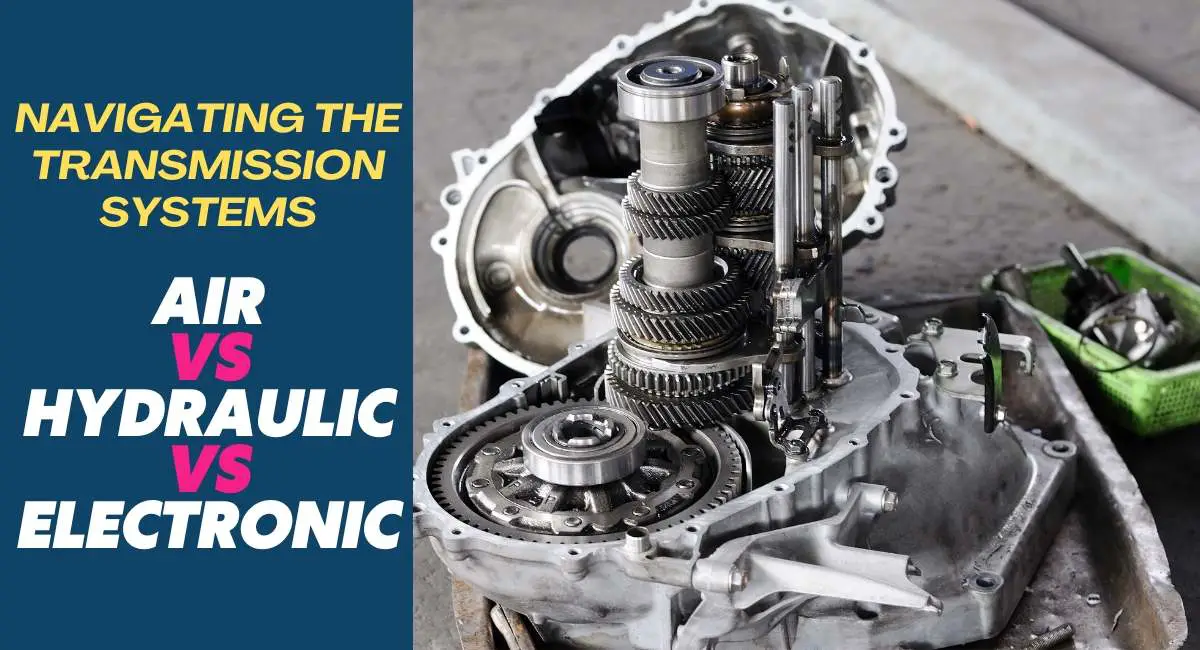Are you planning to buy a car? While you may consider a car’s cost or style, a car’s transmission system is essential to choosing a car. The transmission is the pathway for transferring power from the engine to the wheels via gears. It enables controlled power application, which is crucial for the efficient movement of the vehicle.
When choosing the suitable transmission for your vehicle, it’s vital to understand the unique characteristics of Continuously Variable Transmissions (CVT), Dual-Clutch Transmissions (DCT), and Manual transmissions. Each system offers a different driving experience with distinct advantages and drawbacks.
CVT emphasizes smoothness and fuel efficiency, DCT blends efficiency with rapid shifts, while manual transmission provides direct driver control and engagement.
This guide will explore the details of CVT, DCT, and manual transmissions, their operations, benefits, and how they stack up regarding performance, efficiency, and driving dynamics.

Understanding Continuously Variable Transmissions (CVT)
A CVT is an automatic transmission capable of seamlessly transitioning through an infinite range of gear ratios, unlike traditional automatic transmissions with fixed gear numbers. It means a CVT can always keep the engine at its optimal power, torque, or efficiency speed, depending on the driving conditions.
A CVT comprises two pulleys linked by a belt, one connected to the engine and the other to the wheels. The width of the pulleys can vary, so the belt can move up or down the pulleys, changing the effective gear ratio. A computer controls the pulley and adjusts them according to the driver’s input and the vehicle’s speed.
CVT Operation
CVTs can operate using either a torque converter or a direct drive system. The torque converter allows smoother transitions between gears, enhancing the driving experience. As the vehicle accelerates, the CVT adjusts the pulley diameters to maintain optimal engine RPM and vehicle speed. The step-less acceleration ensures a continuous and smooth power delivery.
Advantages and Drawbacks of CVTs
One of the primary advantages of CVTs is their smooth driving experience. The absence of traditional gear changes eliminates the jerky sensation often associated with shifting gears in manual or automatic transmissions.
Additionally, CVTs can contribute to improved fuel efficiency, as they allow the engine to operate at its most efficient RPM range. CVTs have more responsive performance because they can quickly adjust to the driver’s demand.
However, it’s essential to consider potential drawbacks, such as concerns about reliability. Since the belt and pulley may wear and tear out faster, CVTs have lower reliability and durability.
Some drivers have reported CVT issues, citing concerns about long-term durability and maintenance costs. The higher cost and complexity are because the CVT requires more sophisticated components and software.
Plus, you may experience higher noise and vibration because the engine may rev higher or lower than expected.
Despite this, advancements in CVT technology continue to address these concerns, making them a viable option for many drivers.
Dual-Clutch Transmission (DCT) Operation and Benefits
As explained in this video, a Dual-Clutch Transmission (DCT) is an automatic transmission employing two distinct clutches—one for odd and another for even gear sets. It allows the DCT to shift gears faster and smoother than a manual or automatic transmission, improving fuel efficiency and performance.
Some cars that use Dual-Clutch Transmission (DCT) include Audi R8, Ford Focus RS, Hyundai Veloster, and Volkswagen Golf R.
DCT Operation
A DCT consists of two concentric clutch packs, one connected to the engine and the other to the wheels. The clutch packs can vary their width, changing the effective gear ratio. You can control the clutches with a computer that adjusts them according to the driver’s input and the vehicle’s speed.
The essential operation of a DCT is as follows:
When the vehicle is in motion, one clutch engages the current gear while the other pre-selects the next gear.
When the driver changes the gear, the first clutch disengages, and the second clutch engages simultaneously, switching the gear without interrupting the power flow.
The process repeats for each gear change, resulting in seamless and rapid shifts.
Advantages and Drawbacks of DCTs
DCTs offer several advantages, including improved performance and faster gear changes than traditional automatic transmissions. The pre-selection of gears contributes to seamless acceleration and enhanced driving dynamics. Additionally, DCTs often result in better fuel efficiency due to the precise control over gear engagement.
However, it’s worth noting that DCTs can be complex and may require specialized maintenance. Some drivers have reported issues with clutch wear and potential reliability concerns. As technology advances, manufacturers are addressing these challenges, making DCTs more reliable and efficient.
Which is Better, CVT or DCTs
There is no definitive answer to which is better, DVT or CVT, as both types of transmissions have their advantages and disadvantages. It varies on your personal preferences, driving habits, and vehicle needs. Here are some factors to consider when choosing between DVT and CVT:
- Performance: If you value fast and smooth acceleration, DVT may be better for you, as it can shift gears quickly and seamlessly, keeping the engine at its optimal speed for power and torque. CVT may need to catch up when accelerating rapidly, as it does not have fixed gear ratios.
- Efficiency: If you value fuel economy and lower emissions, CVT may be better for you, as it can keep the engine at its most efficient speed for any driving condition. DVT may consume more fuel and produce more emissions than CVT, as it still has some power losses and friction losses during the shifts.
- Driving dynamics: If you value direct and precise feedback and control, DVT may be better for you, as it can provide more responsiveness and adaptability to different driving modes. CVT may feel less engaging and more artificial, as it does not have the sensation of shifting gears.
Manual Transmission Basics and Driving Experience
A manual transmission system is a type of vehicle transmission that requires the driver to manually select the gears by operating a gear stick and a clutch.
The clutch engages or disengages the engine from the transmission, facilitating smooth gear changes. Meanwhile, the gear stick, a lever, empowers the driver to select the preferred gear ratio, influencing the vehicle’s speed and torque.
Manual Transmission Operation
A manual transmission system comprises three primary shafts: the input shaft, the countershaft, and the output shaft. The clutch links the input shaft to the engine, ensuring they rotate at the same speed.
The countershaft is parallel to the input shaft and has several gears of different sizes that are always in mesh with the input shaft. The output shaft links to the wheels via the driveshaft, featuring gears that the gear stick can engage or disengage with the countershaft. Furthermore, the output shaft also has a reverse gear that can change the direction of rotation.
The basic operation of a manual transmission system is as follows:
- Changing gears to break the engine from the transmission stops the input shaft and countershaft rotation.
- The driver then moves the gear stick to the desired position, which engages or disengages the gears on the output shaft and the countershaft. It changes the effective gear ratio between the engine and the wheels.
- The driver then releases the clutch pedal to re-engage the engine with the transmission. It resumes the rotation of the input shaft and the countershaft and transfers the power to the output shaft and the wheels.
You can call the different gear ratios “speeds.” A lower gear ratio (or speed) results in more torque but less speed, whereas a higher gear ratio (or speed) leads to less torque but more speed. The driver can choose the optimal gear ratio for different driving conditions, such as acceleration, cruising, or climbing.
Advantages and Drawbacks of Manual Transmissions
The primary advantage of manual transmissions is their level of control over the driver. Enthusiasts often appreciate the tactile and engaging driving experience of manually shifting gears. Additionally, manual transmissions can be more fuel-efficient in certain driving conditions.
On the downside, manual transmissions require a learning curve, and some drivers find them less convenient in heavy traffic or urban settings. The physical demands of operating the clutch and shifter may also be a consideration for those seeking a more relaxed driving experience.
Comparison of Performance, Efficiency, and Driving Dynamics
Now, let’s compare these three transmission systems in terms of performance, efficiency, and driving dynamics to help you make an informed decision based on your driving preferences.
Performance Considerations
When it comes to acceleration and speed capabilities, DCTs often outperform CVTs and manual transmissions. The rapid and precise gear changes in DCTs contribute to quicker acceleration and improved overall performance. However, some high-performance CVTs, especially in certain sports cars, have closed the gap recently.
Response time to driver input is another crucial aspect of performance. Manual transmissions provide the most immediate response as the driver controls gear changes. DCTs follow closely behind, while CVTs may have a slight delay due to the nature of their continuously variable operation.
Efficiency Considerations
Fuel economy is crucial for many drivers when choosing a transmission system. CVTs generally offer better fuel efficiency, especially in stop-and-go traffic or city driving conditions. The ability to keep the engine operating within its optimal RPM range contributes to improved fuel economy.
DCTs also provide good fuel efficiency, thanks to their precise control over gear engagement. However, you can influence the efficiency of DCTs by driving style and the specific transmission design. While capable of achieving good fuel economy, manual transmissions may need to catch up to CVTs and DCTs in particular scenarios.
Maintenance and Long-Term Costs
When it comes to maintenance and long-term costs, manual transmissions are often considered the simplest and most cost-effective. They have fewer components than CVTs and DCTs, reducing the likelihood of complex and expensive repairs.
While generally reliable, CVTs may require specialized maintenance, making repairs more expensive. DCTs, with their dual-clutch design, may incur higher maintenance costs, particularly concerning clutch replacements. However, advancements in transmission technology are continuously improving all transmission types’ durability and longevity.
Driving Dynamics
The transmission system influences the driving dynamics of a vehicle. Manual transmissions provide high engagement and control, making them popular among driving enthusiasts. The ability to choose gears manually allows for a more tailored driving experience.
DCTs also contribute to dynamic driving experiences, offering fast and precise gear changes that enhance performance and responsiveness. While known for smooth acceleration, CVTs may lack engagement and sportiness in manual and DCT-equipped vehicles. However, recent advancements in CVT technology have improved their driving dynamics in specific applications.
Choosing the Right Transmission for Your Needs
Now that we’ve explored the characteristics of CVTs, DCTs, and Manual transmissions, how do you choose the right one for your needs? Consider the following factors:
Consideration of Driving Preferences
A CVT may be ideal if you prioritize a smooth, hassle-free driving experience. CVTs are well-suited for daily commuting and situations where you desire a seamless acceleration curve. However, a manual transmission might appeal more if you enjoy an engaged driving experience and want precise control over gear changes.
For those seeking a balance between performance and convenience, DCTs provide rapid and smooth gear changes without sacrificing fuel efficiency. DCTs are well-suited for both daily commuting and spirited driving.
Environmental and Efficiency Concerns
If fuel efficiency is a top priority, CVTs generally provide optimal fuel economy, especially in city driving conditions. The continuous variation of gear ratios ensures the engine operates efficiently across various speeds.
DCTs also offer good fuel efficiency, mainly when rapid gear changes contribute to overall fuel economy. While capable of delivering good fuel efficiency, manual transmissions may require a more conscious effort from the driver to achieve optimal MPG.
Maintenance and Ownership Costs
Consider your budget and long-term ownership costs when choosing a transmission. Manual transmissions are often the most cost-effective in terms of maintenance, with fewer components prone to failure. However, they may require more effort from the driver, especially in heavy traffic.
While generally reliable, CVTs may involve higher repair costs if issues arise. DCTs, with their dual-clutch design, may have higher maintenance costs, particularly concerning clutch replacements—factor in these considerations when evaluating the overall cost of ownership.
Conclusion
Choosing between CVT, DCT, and Manual transmissions depends on your preferences. CVTs offer a smooth commute, DCTs balance performance and efficiency, while Manuals provide ultimate control for enthusiasts. As technology evolves, transmissions will likely improve in reliability and efficiency. Consider your driving habits and preferences to make an informed decision.

